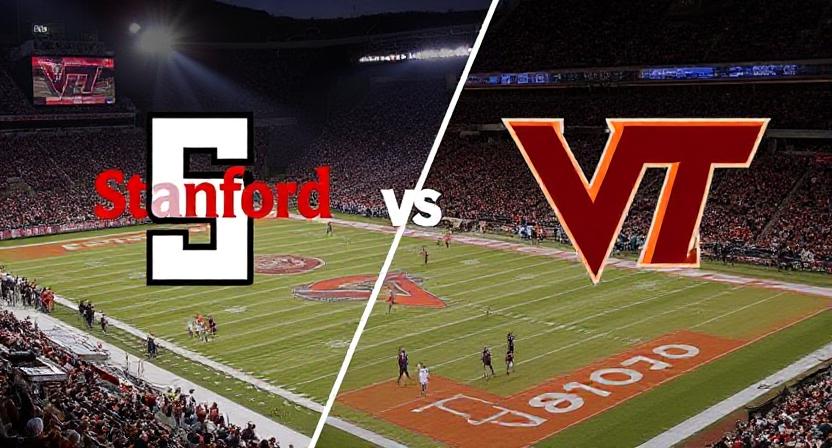When it comes to choosing between Stanford University and Virginia Tech, students, parents, and education professionals often find themselves weighing several factors. Both universities are respected for their academics, research opportunities, and campus life. However, they differ significantly in location, culture, tuition, and areas of academic strength.
In this in-depth comparison of Stanford vs Virginia Tech, we’ll explore everything from academics and campus life to sports and career prospects, helping you decide which university aligns best with your goals.
H2: Overview of Stanford University
Stanford University, located in Stanford, California, is a private research university known for its academic prestige and proximity to Silicon Valley.
H3: Academics at Stanford
Stanford is consistently ranked among the top universities in the world. It offers:
-
Over 65 major fields of study
-
Renowned programs in Computer Science, Engineering, Business, and Medicine
-
A low student-to-faculty ratio of 5:1
-
High emphasis on innovation and entrepreneurship
The university fosters a competitive yet collaborative academic environment. Its alumni include Nobel laureates, tech founders like the Google co-founders, and political leaders.
H3: Campus and Student Life
Stanford boasts a stunning 8,180-acre campus with palm-lined walkways, state-of-the-art facilities, and a vibrant student life. Students have access to:
-
Over 600 student organizations
-
D1 sports teams (Pac-12 Conference)
-
Cutting-edge research centers and labs
-
Cultural diversity and inclusion
Being in the heart of Silicon Valley also means students enjoy opportunities to intern or work at tech giants like Google, Apple, and Facebook.
H2: Overview of Virginia Tech
Virginia Tech, located in Blacksburg, Virginia, is a public land-grant research university known for its strong engineering and STEM programs.
H3: Academics at Virginia Tech
Virginia Tech has earned a solid reputation, especially in Engineering, Architecture, and Biological Sciences. Highlights include:
-
Over 280 undergraduate and graduate programs
-
Highly ranked College of Engineering
-
A practical, hands-on learning approach
-
Student-to-faculty ratio of 14:1
The university also emphasizes experiential learning, with co-op and internship opportunities integrated into many programs.
H3: Campus and Student Life
Virginia Tech’s 2,600-acre campus is nestled in the Blue Ridge Mountains, offering scenic views and a tight-knit community feel. Key features include:
-
Over 700 student organizations
-
Renowned Corps of Cadets program
-
ACC Division I athletics
-
A strong sense of school pride and tradition
Blacksburg is often rated as one of the best college towns in America, thanks to its safety, affordability, and welcoming atmosphere.
H2: Stanford vs Virginia Tech: Key Differences
Now that we’ve looked at each school individually, let’s dive deeper into the key differences between Stanford and Virginia Tech.
H3: Admission and Selectivity
-
Stanford University: Extremely competitive, with an acceptance rate of around 4%. High SAT/ACT scores, leadership, and innovation are expected.
-
Virginia Tech: Moderately selective, with an acceptance rate around 56%. Strong academic records and well-rounded applications are key.
Bottom Line: Stanford is much harder to get into than Virginia Tech.
H3: Tuition and Financial Aid
-
Stanford (2025-26): Approx. $64,000/year (tuition only), but generous need-based financial aid.
-
Virginia Tech (2025-26): Around $17,000/year (in-state) or $37,000/year (out-of-state).
Bottom Line: Virginia Tech is more affordable, especially for Virginia residents, while Stanford offers better aid packages for low-income students.
H3: Academics and Research Opportunities
-
Stanford: Known globally for research, particularly in tech and entrepreneurship.
-
Virginia Tech: Strong in applied sciences and engineering, with growing research initiatives.
Bottom Line: Both schools are excellent, but Stanford has the edge in international research impact and innovation.
H3: Career Outcomes and Alumni Networks
-
Stanford: Graduates often land jobs in Silicon Valley and earn high starting salaries. Alumni network includes top tech and business leaders.
-
Virginia Tech: Strong job placement in engineering, government, and regional industries. Alumni are influential, especially in the Southeast and East Coast.
Bottom Line: Stanford offers broader global opportunities, while Virginia Tech excels regionally.
H2: Sports and Extracurriculars
Athletics play a big role at both universities, though the atmosphere differs.
H3: Stanford Sports
-
NCAA Division I – Pac-12 Conference
-
134 NCAA championships (one of the highest in the country)
-
Notable programs: Swimming, Tennis, Gymnastics
Stanford students enjoy a balance of academics and athletics, with many Olympians among the alumni.
H3: Virginia Tech Sports
-
NCAA Division I – Atlantic Coast Conference (ACC)
-
Strong football culture (Lane Stadium is famous for its “Enter Sandman” entrance)
-
Notable programs: Football, Wrestling, Track and Field
Virginia Tech’s school spirit is unmatched, especially during football season.
H2: Which Is Better: Stanford or Virginia Tech?
Choosing between Stanford vs Virginia Tech depends on your priorities, career goals, and financial situation.
H3: Choose Stanford If:
-
You’re aiming for a career in tech, entrepreneurship, or global business
-
You want to be in Silicon Valley and part of a high-profile academic community
-
You’re prepared for a highly competitive admissions process
H3: Choose Virginia Tech If:
-
You’re interested in engineering, architecture, or military leadership (Corps of Cadets)
-
You value hands-on learning and strong school spirit
-
You prefer a more affordable education without compromising quality
H2: Final Thoughts on Stanford vs Virginia Tech
Both Stanford University and Virginia Tech offer unique experiences that can shape your academic and professional future. While Stanford shines as an elite, globally recognized institution with top-tier resources, Virginia Tech delivers a robust, community-driven education, especially strong in STEM and engineering fields.
Ultimately, the choice comes down to fit: Where do you see yourself thriving — in the fast-paced innovation hub of California, or in the friendly, high-energy environment of a top public university in Virginia?
Whichever you choose, both schools can offer a launchpad to success.



